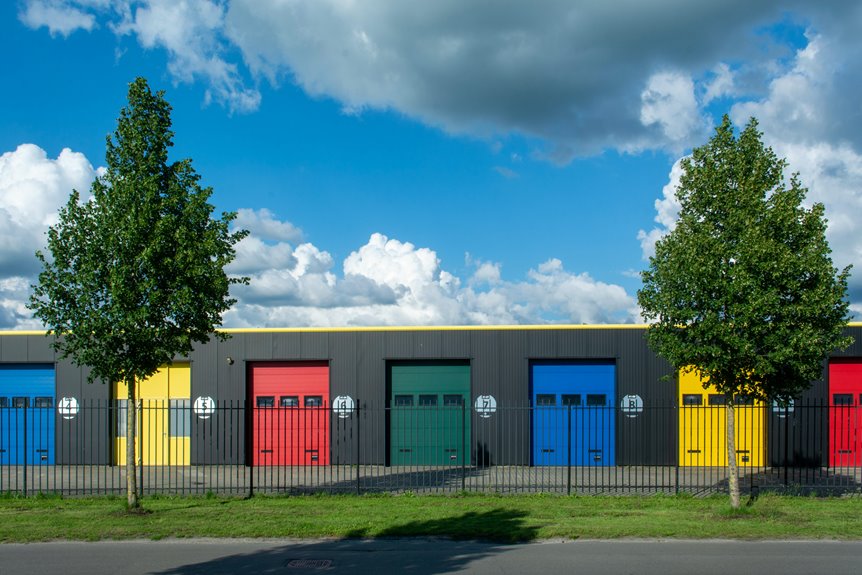Vacant properties present a unique and often lucrative opportunity for real estate investors. While these properties can sometimes be seen as liabilities, they can also be transformed into valuable assets with the right vision and strategy. In this blog, we’ll explore how to leverage vacant properties for investment, the types of investment opportunities available, and the benefits of investing in these often-overlooked assets. Learn more about ” The future of vacant properties in real estate markets”
1. Understanding Vacant Properties
What Are Vacant Properties?
Vacant properties include residential homes, commercial buildings, and land that are unoccupied and not actively in use. These properties may have fallen into disrepair, become outdated, or simply been abandoned due to various circumstances.
Why Invest in Vacant Properties?
Investing in vacant properties can provide several advantages:
- Lower Purchase Prices: Vacant properties are often priced lower than occupied ones, providing a potential opportunity for significant capital appreciation.
- Increased Demand for Housing: With housing shortages in many areas, renovating vacant homes can meet market demands while generating rental income.
- Tax Benefits: In some regions, there may be tax incentives for investing in and rehabilitating vacant properties.
2. Types of Investment Opportunities
Residential Renovation and Flipping
Investors can purchase vacant residential properties to renovate and resell them for a profit. This strategy, known as flipping, involves:
- Identifying Properties: Look for homes in desirable neighborhoods that require cosmetic updates rather than major structural repairs.
- Budgeting Renovations: Careful budgeting for renovations is crucial to ensure profitability. Focus on improvements that yield high returns, such as kitchen and bathroom upgrades.
Rental Properties
Vacant residential properties can also be transformed into rental units. This strategy allows investors to generate passive income while building equity in the property. Consider the following:
- Long-Term Rentals: After renovation, these properties can be rented to tenants, providing consistent cash flow.
- Short-Term Rentals: Depending on location, converting the property into a short-term rental (such as an Airbnb) can yield higher returns.
Commercial Real Estate
Investing in vacant commercial properties, such as office buildings or retail spaces, offers unique opportunities. Investors can:
- Revitalize Commercial Spaces: Renovate and lease the space to businesses, taking advantage of increasing demand for commercial real estate in certain areas.
- Repurpose Properties: Convert old commercial buildings into mixed-use developments or residential units to attract new tenants.
Land Development
Vacant land can be a blank canvas for various investment opportunities. Investors can:
- Build New Structures: Purchase vacant land in growing areas and develop residential or commercial properties.
- Hold for Appreciation: In some markets, holding onto vacant land can lead to substantial appreciation as the area develops.
3. Steps to Invest in Vacant Properties
Research and Identify Opportunities
Before investing, conduct thorough research on local markets to identify neighborhoods with growth potential and demand for housing or commercial spaces. Pay attention to zoning laws and property values to make informed decisions.
Evaluate the Property Condition
Once you identify a potential property, evaluate its condition. Consider hiring professionals for inspections to uncover any hidden issues that may affect renovation costs and overall viability.
Secure Financing
Explore various financing options for your investment, including traditional mortgages, hard money loans, or partnerships with other investors. Ensure you have a clear budget in place for renovations and ongoing expenses.
Develop a Renovation Plan
Create a detailed renovation plan that outlines your vision for the property, necessary repairs, and improvements. Ensure that your plan aligns with market demands and potential tenant preferences.
Market the Property
After renovations are complete, market the property effectively. Utilize online listings, social media, and traditional advertising methods to attract potential buyers or renters.
4. The Benefits of Investing in Vacant Properties
Increased Equity
Investing in vacant properties often leads to increased equity as you renovate and improve the property’s value. This equity can be tapped into for future investments or other financial needs.
Community Improvement
By investing in and revitalizing vacant properties, you contribute to community improvement. This can lead to increased property values in the surrounding area, benefiting both investors and residents.
Diversification of Investment Portfolio
Adding vacant properties to your investment portfolio can diversify your assets and spread risk across different types of real estate investments.
Conclusion
Using vacant properties for investment opportunities can be a rewarding strategy for both new and experienced investors. By understanding the potential benefits, exploring various investment options, and following a systematic approach, you can capitalize on these often-overlooked assets. With careful planning and execution, vacant properties can turn into profitable ventures that contribute positively to the community and your financial future.
FAQs
Q: What are the risks of investing in vacant properties?
A: Risks include potential repair costs, market fluctuations, and the time required for renovations. Conducting thorough research and budgeting can help mitigate these risks.
Q: How do I find vacant properties for investment?
A: Look for vacant properties through real estate listings, public records, auctions, and networking with local real estate agents or investors.
Q: Are there financing options specifically for vacant properties?
A: Yes, investors can explore options such as hard money loans, traditional mortgages, and private financing. Each option has different terms and conditions, so it’s essential to evaluate what works best for your situation.
Q: How can I determine the potential value of a vacant property?
A: Analyze comparable properties in the area, assess the property’s condition, and estimate renovation costs to gauge its potential value after improvements.
Q: What should I consider when renovating a vacant property?
A: Focus on structural integrity, local building codes, market demands, and potential returns on investment. Prioritize renovations that enhance livability and appeal to prospective buyers or renters.
Investing in vacant properties can be a fruitful endeavor when approached strategically, offering opportunities for growth, income, and community enhancement.











